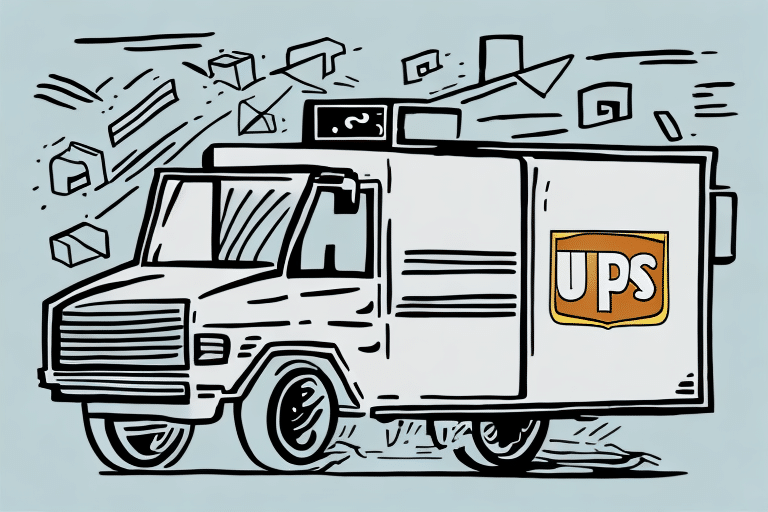Understanding UPS Insurance Coverage: What You Need to Know
When shipping valuable or fragile items through UPS, it's crucial to purchase insurance to safeguard your package against potential loss or damage. UPS offers shipment insurance for both domestic and international packages, with coverage options up to $100,000. The cost of insurance depends on the declared value of your package, the type of service selected, and the destination.
UPS provides three primary types of insurance coverage:
- Loss or Damage Coverage: Protects against the loss or damage of the package during transit.
- Declared Value for Carriage: Covers the value of the goods being shipped.
- Declared Value for Customs: Applies to international shipments, covering duties and taxes.
It's important to note that certain items, such as cash, jewelry, and antiques, may not be fully covered under standard UPS insurance policies. Additionally, high-value items might require additional documentation, such as proof of value, to ensure adequate coverage. Always review UPS's insurance policy and guidelines before shipping valuable items to confirm proper coverage and necessary documentation.
Calculating UPS Insurance Costs for Your Package
The cost of UPS insurance is primarily based on the declared value of your shipment. For instance, shipping a package valued at $500 will incur an insurance fee calculated as a percentage of the declared value. This percentage varies depending on the chosen service type and the final destination of the package.
To accurately calculate UPS insurance costs, you can utilize the UPS Shipping Insurance Calculator or contact UPS customer service directly for a detailed quote.
It's essential to understand that UPS insurance covers only the declared monetary value of the package, not any sentimental or intrinsic value it may hold. For items of significant sentimental value or those that are irreplaceable, considering additional insurance coverage from a third-party provider is advisable.
UPS offers various shipping options that include insurance coverage, such as UPS Next Day Air, UPS 2nd Day Air, and UPS Worldwide Express. These services typically provide higher levels of insurance coverage and faster delivery times but come at a higher cost. Evaluating the benefits and costs of each shipping option will help determine the best choice for your specific package needs.
Factors Affecting UPS Insurance Costs
Several factors influence the cost of UPS insurance for your package:
- Declared Value: Higher declared values result in higher insurance costs.
- Destination: International shipments may incur higher insurance fees due to increased risk and handling costs.
- Shipping Method: Express and overnight services typically have higher insurance premiums compared to standard shipping options.
- Package Weight and Dimensions: Larger and heavier packages may have increased insurance costs.
- Item Type: Shipping high-value items like electronics, jewelry, or artwork may require additional documentation, affecting the overall insurance cost.
The type of packaging used can also impact insurance costs. Proper packaging with materials like bubble wrap or foam peanuts ensures the safety of fragile items but can add to the package's weight and volume, potentially increasing insurance fees.
Additionally, the timing of your shipment plays a role. Expedited shipping methods, while faster, are generally more expensive and come with higher insurance costs.
What UPS Insurance Covers and Excludes
UPS insurance provides coverage for the actual monetary value of your package if it is lost, stolen, or damaged during transit. However, there are specific exclusions to this coverage:
- Excluded Items: Items such as cash, certain electronics, and perishables may not be fully covered.
- Damage Due to Insufficient Packaging: If damage occurs because of inadequate packaging, UPS insurance may not cover the loss.
- Inherent Vice: Natural deterioration or damage that occurs over time is not covered.
- Recipient Refusal: If the recipient refuses the package, insurance may not apply.
Furthermore, UPS insurance does not cover indirect or consequential damages, such as lost profits or business interruptions resulting from the loss or damage of the package.
For high-value items like jewelry or artwork, UPS may impose lower coverage limits. It's advisable to consult with UPS to determine if additional insurance is necessary for such items.
Remember, UPS insurance is only valid for packages shipped through UPS. If you choose a different carrier or shipping method, you'll need to purchase separate insurance to protect your package during transit.
Benefits of Purchasing UPS Insurance
Investing in UPS insurance offers several advantages:
- Peace of Mind: Knowing your package is protected against loss or damage reduces shipping anxiety.
- Financial Protection: In the event of loss or damage, insurance provides financial compensation based on the declared value.
- Expedited Claims Process: UPS insurance facilitates a straightforward claims process, allowing for quicker compensation without extensive paperwork.
- Coverage for High-Value Items: Insurance extends coverage to valuable and fragile items that standard shipping options might not protect adequately.
Additionally, some legal or contractual obligations may require shipping insurance, making it a necessary investment to fulfill those requirements and protect against potential liability claims.
How to File a UPS Insurance Claim: Step-by-Step Guide
If your package is lost, damaged, or stolen during shipping, filing a UPS insurance claim is essential to receive compensation. Follow these steps to ensure a smooth claims process:
- Document the Damage or Loss: Take clear photos of any damage and keep all packaging materials as evidence.
- Provide Proof of Value: Prepare receipts or invoices that demonstrate the value of the items shipped.
- Fill Out a Claim Form: Access the UPS Claims Form online or contact UPS customer service to obtain the necessary paperwork.
- Submit the Claim: Submit the completed claim form along with all supporting documentation through the UPS website or via mail.
Be mindful of UPS's specific time limits for filing claims:
- Lost Packages: File within 60 days of the scheduled delivery date.
- Damaged Packages: File within 30 days of the delivery date.
- Stolen Packages: Submit a police report within 15 days of filing the claim.
Ensure all documentation is accurate and complete to avoid delays in the claims process. Keeping detailed records and promptly addressing any issues with UPS can facilitate a quicker resolution and compensation.
Tips for Preventing Package Damage or Loss
While UPS insurance provides protection, taking proactive steps can further minimize the risk of damage or loss:
- Proper Packaging: Use sturdy boxes and appropriate packing materials like bubble wrap or foam peanuts to secure your items.
- Accurate Addressing: Double-check the recipient's address to prevent delivery errors.
- Choose the Right Shipping Method: Select a shipping service that aligns with the package's value and fragility.
- Track Your Package: Utilize UPS's tracking services to monitor your shipment's progress and address any issues promptly.
- Special Handling Instructions: For high-value or fragile items, request special handling to ensure extra care during transit.
Additionally, review UPS's packaging guidelines to ensure compliance and reduce the likelihood of damage due to improper packaging.
Be aware of UPS insurance limitations and exclusions. For example, damage resulting from natural disasters or other unforeseen events may not be covered. Carefully reviewing the insurance policy terms and conditions will help you understand the extent of the coverage and take necessary precautions.
Comparing UPS Insurance Costs with Other Shipping Carriers
When selecting a shipping carrier, it's essential to compare insurance costs, coverage options, and benefits across different providers:
- FedEx: Offers similar insurance options with varying coverage limits based on service type and package value.
- DHL: Provides insurance for international shipments, often with different terms and coverage limits compared to domestic services.
- USPS: Offers insurance for packages up to $5,000, with additional coverage available for certain services.
Each carrier has unique insurance policies, coverage limits, and claim processes. Evaluating these factors alongside your specific shipping needs will help you choose the most cost-effective and reliable insurance option.
In conclusion, UPS insurance costs for a package are influenced by factors such as the declared value, shipping destination, and chosen service type. Purchasing UPS insurance offers peace of mind and financial protection during shipping, especially for valuable or fragile items. By following proper packaging and shipping procedures, and understanding the insurance terms, you can ensure that your packages are well-protected throughout their journey.
Additional Considerations When Choosing Shipping Insurance
Beyond comparing costs and coverage, consider the following when selecting shipping insurance:
- Carrier Reliability: Research the carrier's track record for handling and delivering packages safely.
- Customer Service: Evaluate the quality of customer support, especially related to claims processing and resolution.
- Insurance Flexibility: Determine if the carrier offers customizable insurance options that cater to your specific shipping needs.
- Third-Party Insurance Options: Explore external insurance providers that might offer more competitive rates or broader coverage for specialized items.
By thoroughly assessing these factors, you can make an informed decision that ensures the best protection for your shipments while optimizing costs.
Conclusion
Shipping valuable or fragile items requires careful consideration of insurance options to protect against potential loss or damage. UPS offers comprehensive insurance coverage with varying costs based on the declared value, shipping method, and destination. By understanding the factors that influence insurance costs and the coverage provided, you can make informed decisions to ensure your packages are adequately protected.
Additionally, comparing UPS insurance with other shipping carriers can help you identify the most cost-effective and reliable solution for your shipping needs. Implementing best practices in packaging and shipping further minimizes the risk of damage or loss, enhancing the safety and security of your shipments.
For the most accurate and up-to-date information on UPS insurance, visit the official UPS Shipping Insurance page or contact UPS customer service directly.






















